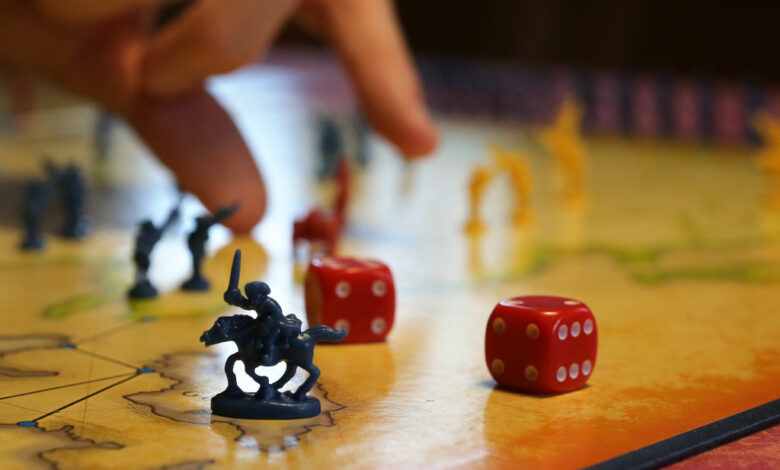
Once again, it’s time for defecting employees to go to our annual company meetings to have some solitude and fun. This year we’re gathering in Atlantic City, America’s abandoned playground. We decided to hold a mini theme week during the meetings to keep the site strong and full of blogs. This year’s theme: Risk!
I consider myself a risk-averse person in almost every respect. It’s not something I’m particularly proud of, but I will put a lot of thought into every move I make, whether professional or personal, and will either give up on anything that could go badly. Or I will wait until every other option is exhausted. (One notable exception led to the website you’re reading right now, but that’s already been talked about a lot at this point.) So when Justin asked me if I wanted to write something for Risk Week, I was like Stunned. We brainstormed a few ideas – if you want me to write about the 2009 Patriots-Colts 4th-and-2 game, sorry – but every idea I had was either boring or pushed the topic of “risk” to its limits. Was stretching beyond. Then I remembered, okay, risk.
As much as I hate Risk, the concept, I love Risk, the board game. I find that this is not a popular opinion and I understand that. Risk is a relic of a previous era, dating back to the rise in board games in the 2010s – partly driven by Although not completely From the spread of the inhabitants of Catan – for about 60 years. The core gameplay loop is simultaneously difficult and simple, and sometimes the effort of setting up the game and explaining all the rules isn’t worth the reward of pacing up and down the world map. And yet, I haven’t found any board game that scratches the itch of rolling opponent dice as strongly as Risk.
For beginners, let me try to describe Risk: Up to six players are assigned different areas on the world map – a standard Risk map has a total of 42 areas, divided across six continents; These numbers vary greatly around the many themed variants of the game that exist, such as game of Thrones risk or lord of the rings Risk – and then slowly but surely try to win enough territories to reach a predetermined victory condition. Often, this is simply a number of fields, although some games also include faster ways to end the game, such as a randomly drawn armistice card. (I don’t like them.)
Victory is achieved by moving small units of troops into neighboring areas and rolling dice to decide the outcome of “battles”. To give an example: if the attacker moves from Venezuela to Brazil with three soldiers, and the defender in the Amazon has two soldiers, the attacker will roll three dice and the defender two. The attacker’s goal is to place two dice that are higher than both of the defender’s dice; If this happens, both defenders are “killed” and the attacker takes Brazil. But if the defender matches or beats the attacker’s two highest dice, those soldiers are instead removed from the game and the defender gets the right to keep his territory.
As far as gameplay is concerned, that’s it. (Don’t yell at me in the comments about it being more complicated; it might be, but the basics are straightforward.) At the end of each round, players get more soldiers based on how much territory they control. Set out to control entire continents, with additional bonuses. You can also redeem the cards you receive to gain territory to get more troops; Well, these moves are risky, but the right timing can completely change the game, allowing you to cover a lot of ground at once.
The strategy then becomes a push-pull between conquering a lot of territory and consolidating one’s position. This makes continents like Africa (worth three additional soldiers if fully controlled) and South America (two soldiers) more valuable than Asia (seven soldiers), because Asia, perhaps in real-life terms, Almost impossible. In its entirety. The continent has a lot of regions and a lot of routes, while Africa only has three entries and South America two. In contrast, although Australia only has one point of entry, in my eyes, it is the worst continent, because there is no place to go to Asia, and a smart player will block that route, essentially Australian. Will block the player’s path. The soldiers moved to a corner of the map.
All these things weren’t particularly clear to me when I started playing Risk. When I was a kid, probably about six years old, my dad had an old Mac laptop with a primitive version of Risk on it. I played it as often as possible: during air travel, at home, sometimes even in the car. (I remember when I could work out in the car without feeling like I had to vomit.) I wasn’t very good; Although risk is simple enough for a 6-year-old to learn, there is enough nuance to know when to take advantage and when to fight another day that escaped the dopamine centers of my young brain, which loves to win. War after war before realizing I had no center of power to defend. I often lost, but I kept playing.
Now that I’m an adult with responsibilities, it’s much harder to find the time, and more importantly, the players willing to engage in a risky game that can take upwards of four hours. I bought a modern version of the board game about a decade ago, and I think I’ve played the entire game on that board maybe seven times since then. When people think of risk, they think of long, drawn-out games that are mostly left up to chance on a roll of the dice. This is not wrong. There is likely some strategy involved in gathering troops to overcome, but at the end of the day, players are at the mercy of the dice.
There’s also a problem with Jeopardy’s end game, where it becomes clear that one player will win, and either everyone has to give up – in my opinion, this is never a satisfactory ending to any game – or no one at all. Keep playing with Sambhavna in turns. Back. And it’s not fun to be the first one to be eliminated; Not only do you obviously lose, but you then have to wait for your friends to finish their games, which can take hours. I hope you enjoy seeing your phone!
With all this in mind, I certainly can’t blame anyone who wants to play something faster, fairer, or more strategic. There are other board games that do Risque, even better. I enjoyed my time playing Inis with some friends a few years ago I’ve heard good things about RootHowever, none of these new board games have ever hit the mark the way a good Risk game does. Lots of games let you form alliances and then betray those alliances at the opportune moment, but few games let players get as angry as the risks involved. Maybe it’s because the risk allows an unexpected alliance to eliminate a player’s endgame in a few turns (it happens to me all the time), or maybe because everyone thinks they can play on the boards of our youth. Better than them at the game (I definitely do). But some of my favorite memories of Risk come from the backstabbing and the anger that followed. There’s nothing like betraying your best friends to little plastic toy soldiers on a colorful map, only to have it come back to haunt you. It’s the promise of risk, and I wouldn’t have it any other way.
